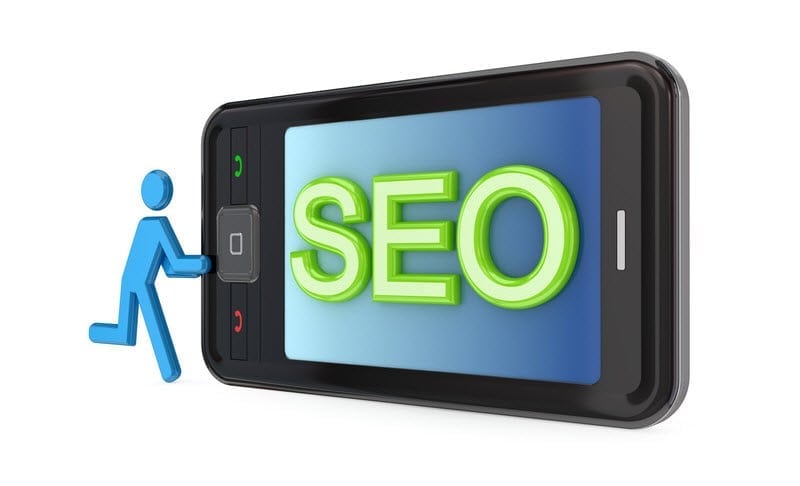 Reading Time: 3 minutes
Reading Time: 3 minutesIn an era of instant gratification, the modern consumer expects brands to deliver what they want, when they want it. In the past, Google hasn’t penalized sites for slow mobile page speeds. This resulted in a plethora of companies ignoring the issue, and ultimately unhappy customers. Finally, Google has confirmed that mobile site page speed will be part of the algorithm for mobile search results – a relief for consumers, but a potential issue for brands.
Why Optimize a Mobile Site?
It’s important for brands to realize that a mobile site does not automatically inherit its desktop site search engine optimization (SEO) ranking. Instead, Google uses an algorithm that ranks mobile sites using the desktop rating with additional criteria for the final ranking. Google updated the algorithm to include page speed due to the fact that slow mobile sites have higher bounce rates – losing conversions and giving consumers an unsatisfactory experience.
The goal of Google’s algorithms is to improve the user experience. Google rewards websites that adhere to SEO rules in the hopes of achieving this goal. Fast webpages help a site visitor navigate a website faster and easier, completing order forms with ease and enjoying the all-around shopping experience. Slow webpages, on the other hand, turn visitors away and decrease conversions.
Several studies over the years prove the negative impact of wait times on conversion rates. A survey by Akamai and Gomez.com states that 40% of people abandon a site that takes more than three seconds to load. Even a one-second delay shows a 7% reduction rate in conversions – a statistic that would result in $2.5 million in lost sales per year for a company that makes $100,000 per day.
If the numbers aren’t enough to convince you of the importance of mobile page speed optimization, Google’s new algorithm will. Now, Google is penalizing sites that don’t optimize for mobile page speed. This means less chance of consumers seeing the site, decreased foot traffic, and a significant hit to company profits. Mobile SEO can make or break an eCommerce site. It has the power to improve the user experience or damage it, shaping the impression visitors get from your company.
UX and Mobile Page Speed
The user experience (UX) relies heavily on how easily a visitor can navigate a webpage. This includes smart website design features and best practices, such as responsive web design, but it also encompasses elements like page speed. The more you enhance your site’s UX, the more satisfied your visitors will be during their time on your page. This in turn leads to higher SEO rankings, increased site traffic, and better profitability.
In an age where mobile Internet users surpass desktop users, customers aren’t impressed with websites that ignore mobile SEO. The point of mobile SEO isn’t to penalize brands that try their hardest. It’s to give search engine users better results. Usability refers to the extent of efficiency and effectiveness your site offers – two components that directly affect the customer experience. UX and mobile page speed work together to provide customers the best service possible.
How to Improve Mobile Page Speed
If you see a negative effect from Google’s new algorithm, it most likely means your mobile site page speed is lacking. In general, slow page speed comes down to the virtual “weight” of your website. This can mean too many ads, heavy images, or dense code. The first step to improving your mobile SEO is to analyze your current page speed. You can use several tools for this process, including Google’s free analytical tool PageSpeed Insights. Enter your URL and press “Analyze,” and Google will instantly give you a full report of what passed and what needs work.
Analyzing Target.com, for example, came up with a 52/100 rating for mobile optimization. Suggestions for improving the rating include eliminating render-blocking JavaScript and CSS in content and leveraging browser caching. Google gives detailed descriptions about how to fix the problems it finds with optimization, and lets users see results for desktop as well. Common issues that can reduce mobile site speed include:
- Lack of file minification
- Un-optimized images being used
- Un-optimized browsers, such as apps using Flash
- Cheap web hosts
- Complicated theme designs
- Widgets
- Embedded media such as videos from outside sites
Many site managers can improve these issues on their own, replacing heavy HD imagery with compressed images or JPEG files instead. If you don’t know where to begin, ask an experienced SEO agency for help optimizing your mobile site. The investment is well worth the returns in the long term.
For every 100 milliseconds of speed improvement, websites can grow incremental revenue by 1%. Do your brand a favor and optimize your mobile site’s page speed before Google’s algorithm penalizes you. Speed optimization doesn’t take a lot of effort, and it can lead to significant boosts in SEO ranking. If a few seconds can cost you thousands in lost revenue, think of what a few hours of extra work can gain.




